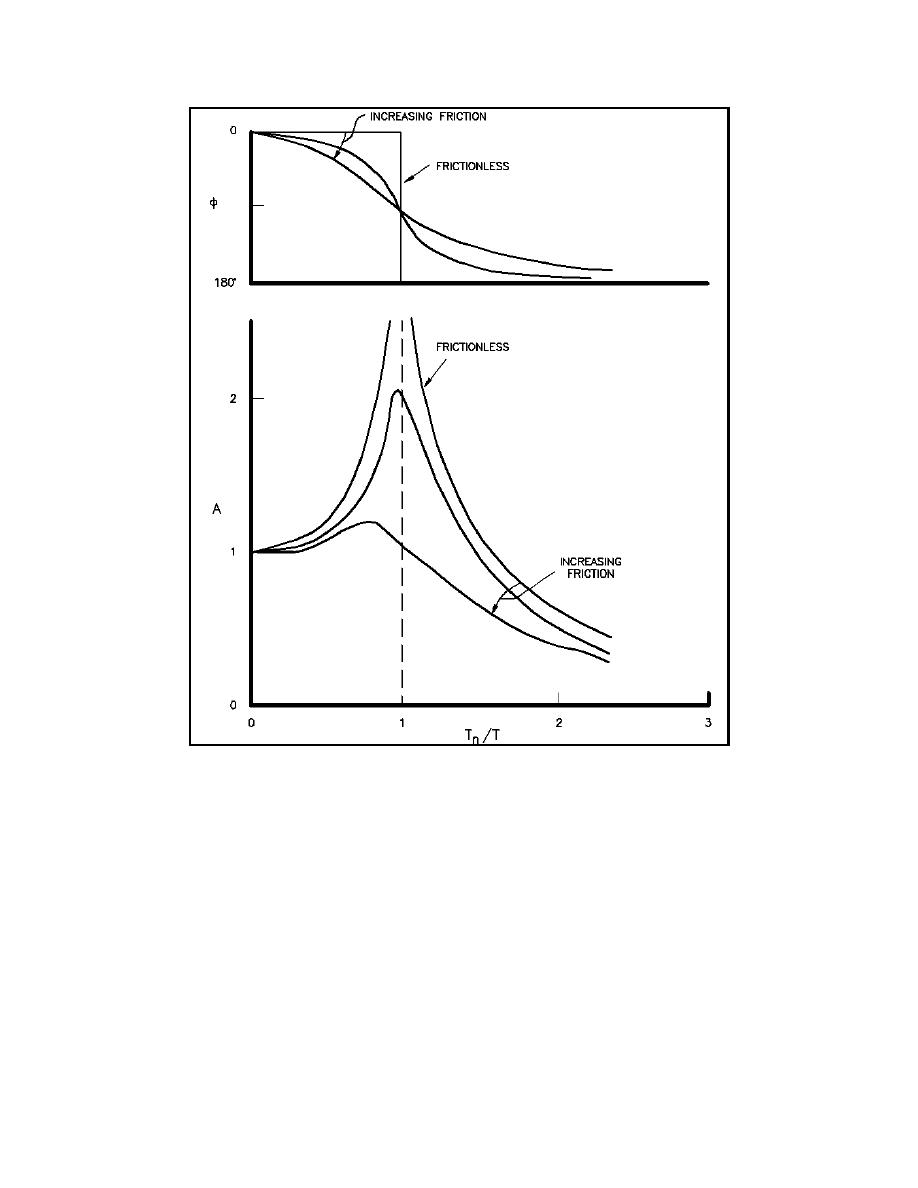
EM 1110-2-1100 (Part II)
30 Apr 02
Figure II-7-27. Behavior of an oscillating system with one degree of freedom
lag. The greatest amplification occurs when Tn/T = 1 and φ = 90 deg. With a cyclic excitation at period Tn,
the amplification factor increases with time until the rate of energy input equals the rate of energy dissipation
by friction. When energy input is stopped, the response amplitude decreases exponentially with time as a
relationships are further developed and discussed in Raichlen (1968), Meirovitch (1975), Sorensen (1986),
and Wilson (1972).
c. Closed basins.
(1) Enclosed basins can experience oscillations due to a variety of causes. Lake oscillations are usually
the result of a sudden change, or a series of intermittent-periodic changes, in atmospheric pressure or wind
velocity. Oscillations in canals can be initiated by suddenly adding or subtracting large quantities of water.
Harbor oscillations are usually initiated by forcing through the entrance; hence, they deviate from a true
closed basin. Local seismic activity can also create oscillations in an enclosed basin.
II-7-34
Harbor Hydrodynamics


 Previous Page
Previous Page
